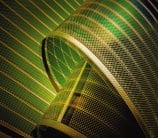Download the latest Editor’s Choice papers from the Journal of Polymer Science: Polymer Physics for free, including expert perspectives on photoresponsive polymers and mechanical energy harvesting with electrostrictive polymers, as well as the most recent research developments in multifunctional graphene composites, polymer transistors, and wet and dry adhesives:
- Light to work transduction and shape memory in glassy, photoresponsive macromolecular systems: Trends and opportunities, by Timothy J. White.
Photoresponsive macromolecular systems could be ideal for aerospace, automotive and biomedical applications where rapid but tailored mechanical responses are required. In this Perspective, Tim White looks at the challenges remaining in linking the photomechanical output with geometric, photochemical and polymer physics aspects of the materials.
- Multifunctional elastomer nanocomposites with functionalized graphene single sheets, by Bulent Ozbas, Christopher D. O’Neill, Richard A. Register, Ilhan A. Aksay, Robert K. Prud’homme and Douglas H. Adamson.
Adamson and colleagues show that, thanks to their unique shape, single graphene sheets act as multifunctional fillers for several types of elastomers, imparting not only better mechanical properties, but also reduced gas permeation and electrical conductivity.
- Electrostrictive polymers for mechanical energy harvesting, by MickaëlLallart, Pierre-Jean Cottinet, Daniel Guyomar and Laurent Lebrun.
Daniel Guyomar and colleagues take a look at research in the growing field of electrostrictive polymers—materials that deform under the influence of an electric field—for energy generation, with recent advances, fundamental mechanisms, and future challenges all discussed.
- Improving charge transport in poly(3-hexylthiophene) transistors via blending with an alkyl-substituted phenylene–thiophene–thiophene–phenylene molecule, by Andrea Liscio, Massimo Bonini, Emanuele Treossi, Emanuele Orgiu, Marcel Kastler, Florian Dötz, Vincenzo Palermo and Paolo Samorì.
Blending a small amount of a thiophene-containing molecule with the well-known polymer P3HT is shown by Samori and colleagues to improve the polymer’s charge-transport properties. The authors show that the method works by generating percolation paths within the polymer, and is tunable with the additive’s concentration.
- Teflon hierarchical nanopillars with dry and wet adhesive properties, by HadiIzadi, Boxin Zhao, Yougun Han, Neil McManus and Alexander Penlidis.
Penlidis and colleagues show that fluoropolymer nanopillars with a “fluffy” top layer work as efficient dry adhesives, generating strong adhesion both in air and under water.

















